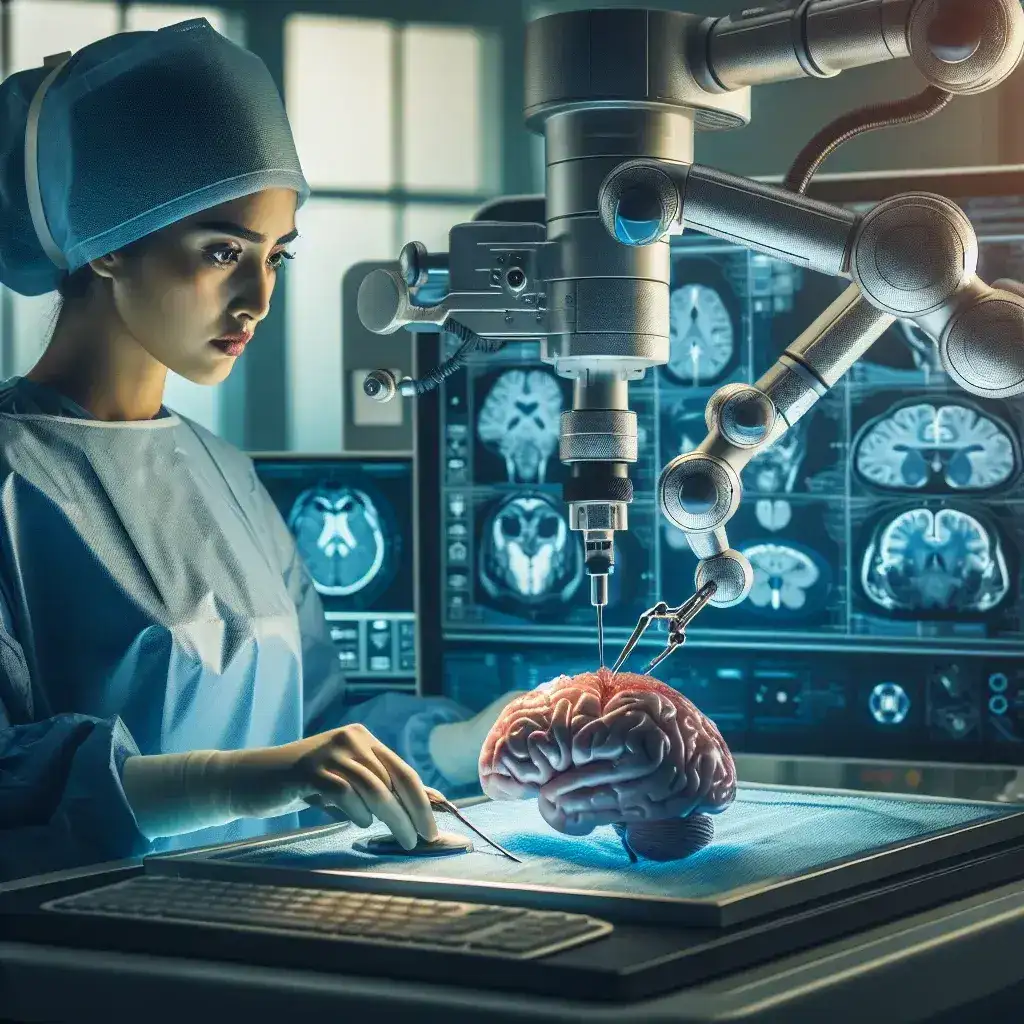
Introduction to the MIRO MICA System
The MIRO MICA system represents a significant advancement in the field of neurosurgery, enabling teleoperated procedures that combine cutting-edge technology with the expertise of neurosurgeons. This article delves into the functionalities, advantages, and future implications of the MIRO MICA system in the realm of teleoperated neurosurgery.
Understanding Teleoperated Neurosurgery
Teleoperated neurosurgery refers to surgical procedures conducted remotely, allowing surgeons to perform complex operations from a distance. This innovative approach not only enhances accessibility for patients in remote areas but also allows experts to collaborate across geographical boundaries.
The Role of MIRO MICA
The MIRO MICA system integrates advanced robotics, real-time imaging, and intuitive control interfaces to facilitate remote neurosurgical procedures. This system is designed to replicate the tactile feedback and precision that a surgeon would experience during traditional surgery, thereby ensuring high levels of accuracy and safety.
Key Features of MIRO MICA
- Robotic Precision: The MIRO MICA system boasts highly precise robotic arms that can perform intricate movements, assisting surgeons in executing delicate procedures with unparalleled accuracy.
- Real-Time Imaging: Equipped with advanced imaging technology, the MIRO MICA provides surgeons with real-time visual feedback, enhancing their ability to make informed decisions during surgery.
- User-Friendly Interface: The system features an intuitive control interface that enables surgeons to operate the robotic arms with ease, minimizing the learning curve associated with new technologies.
- Enhanced Patient Safety: By allowing surgeons to operate remotely, the MIRO MICA system reduces the risks associated with patient transportation and enables immediate surgical intervention when needed.
Historical Context of Neurosurgery
Neurosurgery has evolved significantly over the years, from rudimentary techniques in ancient times to the sophisticated procedures we see today. The introduction of robotics and teleoperation marks a new era in this evolution, promising enhanced outcomes and broader accessibility.
Milestones in Neurosurgery
- Early Techniques: Ancient civilizations practiced trepanation, a primitive form of surgery aimed at alleviating pressure on the brain.
- Modern Developments: The 20th century saw the introduction of advanced imaging technologies such as MRI and CT scans, which revolutionized the diagnostic capabilities in neurosurgery.
- Robotic Surgery: The late 20th and early 21st centuries introduced robotic systems that expanded surgical possibilities, leading to greater precision and minimally invasive procedures.
The Future of Teleoperated Neurosurgery
The future of teleoperated neurosurgery looks promising, with the MIRO MICA system paving the way for innovations that could reshape surgical practices. As technology continues to advance, we can expect enhanced connectivity, improved surgical tools, and an increasing number of surgeries being performed remotely.
Predictions for the Future
- Increased Accessibility: Teleoperated neurosurgery may become commonplace in rural or underserved regions, improving patient access to specialized care.
- Collaboration Across Borders: Surgeons from different parts of the world can collaborate in real-time, sharing expertise and improving surgical outcomes.
- Integration of AI: The incorporation of artificial intelligence into teleoperated systems could enhance decision-making, predict outcomes, and further improve patient safety.
Pros and Cons of the MIRO MICA System
Advantages
- Remote Accessibility: Patients can receive expert surgical care without the need to travel, which can be particularly beneficial during emergencies.
- Reduced Recovery Time: Minimally invasive techniques facilitated by the MIRO MICA system often lead to quicker recovery times compared to traditional surgeries.
- Enhanced Training Opportunities: The system can be utilized for training new surgeons, allowing them to practice procedures in a controlled environment.
Challenges
- Cost: The initial investment in MIRO MICA systems can be significant, which may pose barriers for some medical facilities.
- Technical Issues: Reliance on technology can introduce risks, such as system malfunctions or connectivity issues during critical procedures.
Real-Life Examples of MIRO MICA in Action
Several hospitals and surgical centers have begun implementing the MIRO MICA system, showcasing its capabilities in real-life scenarios:
Case Study 1: Remote Surgery in Rural Areas
A neurosurgeon in a metropolitan area performed a complex brain surgery on a patient located in a rural hospital using the MIRO MICA system. The procedure was successful, demonstrating the system’s potential to bridge the gap between urban expertise and rural patient needs.
Case Study 2: Collaborative Surgery
A team of surgeons from different countries collaborated on a challenging case, utilizing the MIRO MICA for real-time operations, leading to improved outcomes and sharing of best practices.
Conclusion
The MIRO MICA system represents a transformative leap in teleoperated neurosurgery, offering numerous benefits to patients and healthcare providers alike. As we move forward, embracing this technology could redefine surgical standards, enabling better access to care and improving patient outcomes globally. The integration of robotics in neurosurgery is not just the future; it is the present, with MIRO MICA leading the charge towards a more interconnected and efficient healthcare landscape.
Leave a Reply